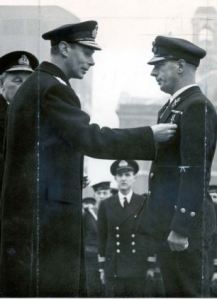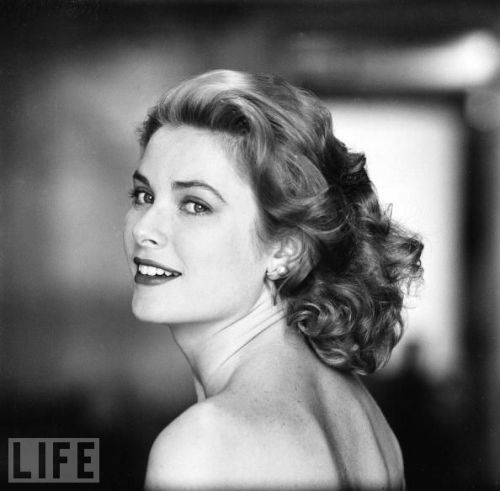
George VI (Albert Frederick Arthur George; 14 December 1895 – 6 February 1952) was King of the United Kingdom and the Dominions of the British Commonwealth from 11 December 1936 until his death. He was the last Emperor of India, and the first Head of the Commonwealth.
It was Christmas, 1939, and Great Britain was at war with Nazi Germany. Like his father before him, King George VI would continue the holiday tradition of addressing the British Empire in a live radio message. That year, he would broadcast from the royal country house at Sandringham, where he and his family would spend Christmas.

King George VI and his family leave Buckingham Palace, 1939, to spend Christmas at their country house at Sandringham. Pictured are the King and his wife Queen Elizabeth, daughters Princesses Elizabeth and Margaret Rose. Princess Elizabeth would become Queen Elizabeth upon the death of her father in 1952.
You will remember that King George VI was not a man comfortable with public speaking. His struggle to overcome a debilitating speech impediment – a stutter – was immortalized in the 2011 American Academy Award-winning film for Best Picture, “The King’s Speech.” A shy, nervous man, a heavy smoker and drinker (it would kill him at 56), King George VI would have preferred to have remained the Duke of York, living a quiet, out-of-the-public eye life with his sturdy wife and two rosy-cheeked daughters.

British Royal Princesses Elizabeth (l.) and Margaret Rose. This photo was taken in February 1939, seven months before the outbreak of WWII.
King George VI – born Albert, called Bertie – never wanted to be king. He wasn’t supposed to be king. He was only king because his brother David had abdicated the throne in 1936 and he, Bertie, was next in line. Nevertheless, unwillingness aside, this unlikely monarch would rise to the occasion and be the very king the British people so sorely needed in a time of great trouble.
It was December 25, 1939, the day of the broadcast. Dressed in the uniform of the Admiral of the Fleet, the tall and too thin sovereign approached the table where two radio microphones were set up, taking his seat.
Taking a few deep breaths, he began to speak, slowly yet solidly. Measuring his words carefully, he spoke from the heart:
“A new year is at hand. We cannot tell what it will bring. If it brings peace, how thankful we shall all be. If it brings us continued struggle we shall remain undaunted.”
Toward the end of his nine-minute broadcast, he said:
“I feel that we may all find a message of encouragement in the lines which, in my closing words, I would like to say to you:”
He then read from a poem given to him by his 13-year-old daughter, Princess Elizabeth,
“I said to the man who stood at the Gate of the Year,
‘Give me a light that I may tread safely into the unknown.’
And he replied, ‘Go out into the darkness, and put your hand into the Hand of God.
That shall be better than light, and safer than a known way.’”*
He finished by saying,
“May that Almighty Hand guide and uphold us all.”
For a king not known for compelling speeches, this one would be a landmark. It united King and Country in common cause and inspired the people to hold fast. After all, at this point in history, no one knew that the Allies would triumph. Britain was to face five more years of war and brutal bombing by Hitler before the day of liberation would arrive. The end of 1939 was a shaky time and great leadership by King, Queen, and Prime Minister Winston Churchill would hold Britain steady against the Nazi aggressors.

Queen Elizabeth and King George VI of Great Britain stop at Vallence Road, Stepney, in the East End, London, to examine the debris following an air raid in the Second World War. October 4, 1945

King George VI pins a Distinguished Service Medal on Chief Petty Officer C.L.Baldwin in December 1939.
Listen to the last four minutes of the King’s Christmas 1939 message here:
For more about the British Royal Family on this blog, click here.
Click here for the full text of the King’s 1939 Christmas Message plus The REAL austerity Christmas: How a nation gripped by fear kept calm and carried on three months after outbreak of war in 1939
*“The Gate of the Year,” by Minnie Haskins (1908)







































